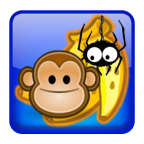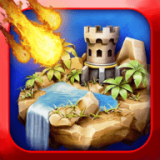使用OpenCV与Python编写自己的俄罗斯方块小游戏
俄罗斯方块游戏是当年流行的游戏。游戏由一个宽度为10格、高度为20格的棋盘组成,如下所示。

俄罗斯方块小游戏
关于此小游戏的规则,我们不再介绍,本期文章主要用代码来实现,我们知道俄罗斯方块小游戏主要有如下7个方块组成,我们在代码中使用字母“ O”,“ I”,“ S”,“ Z”,“ L”,“ J”和“ T”表示它们。

俄罗斯方块
使用OpenCV和python创建俄罗斯方块import cv2 import numpy as np from random import choice SPEED = 1 #控制速度 board = np.uint8(np.zeros([20, 10, 3])) quit = False place = False drop = False switch = False held_piece = "" flag = 0 score = 0首先我们导入需要的第三方库以及定义好需要的变量
# 所有方块造型 next_piece = choice(["O", "I", "S", "Z", "L", "J", "T"]) def get_info(piece): if piece == "I": coords = np.array([[0, 3], [0, 4], [0, 5], [0, 6]]) color = [255, 155, 15] elif piece == "T": coords = np.array([[1, 3], [1, 4], [1, 5], [0, 4]]) color = [138, 41, 175] elif piece == "L": coords = np.array([[1, 3], [1, 4], [1, 5], [0, 5]]) color = [2, 91, 227] elif piece == "J": coords = np.array([[1, 3], [1, 4], [1, 5], [0, 3]]) color = [198, 65, 33] elif piece == "S": coords = np.array([[1, 5], [1, 4], [0, 3], [0, 4]]) color = [55, 15, 215] elif piece == "Z": coords = np.array([[1, 3], [1, 4], [0, 4], [0, 5]]) color = [1, 177, 89] else: coords = np.array([[0, 4], [0, 5], [1, 4], [1, 5]]) color = [2, 159, 227] return coords, color然后我们建立7个俄罗斯方块的造型与颜色,以上建立完成后,我们需要搭建一个游戏界面以及鼠标控制事件
def display(board, coords, color, next_info, held_info, score, SPEED): border = np.uint8(127 - np.zeros([20, 1, 3])) border_ = np.uint8(127 - np.zeros([1, 34, 3])) dummy = board.copy() dummy[coords[:,0], coords[:,1]] = color right = np.uint8(np.zeros([20, 10, 3])) right[next_info[0][:,0] + 2, next_info[0][:,1]] = next_info[1] left = np.uint8(np.zeros([20, 10, 3])) left[held_info[0][:,0] + 2, held_info[0][:,1]] = held_info[1] dummy = np.concatenate((border, left, border, dummy, border, right, border), 1) dummy = np.concatenate((border_, dummy, border_), 0) dummy = dummy.repeat(20, 0).repeat(20, 1) dummy = cv2.putText(dummy, str(score), (520, 200), cv2.FONT_HERSHEY_DUPLEX, 1, [0, 0, 255], 2) # 控制键 dummy = cv2.putText(dummy, "A - move left", (45, 200), cv2.FONT_HERSHEY_DUPLEX, 0.6, [0, 0, 255]) dummy = cv2.putText(dummy, "D - move right", (45, 225), cv2.FONT_HERSHEY_DUPLEX, 0.6, [0, 0, 255]) dummy = cv2.putText(dummy, "S - move down", (45, 250), cv2.FONT_HERSHEY_DUPLEX, 0.6, [0, 0, 255]) dummy = cv2.putText(dummy, "W - hard drop", (45, 275), cv2.FONT_HERSHEY_DUPLEX, 0.6, [0, 0, 255]) dummy = cv2.putText(dummy, "J - rotate left", (45, 300), cv2.FONT_HERSHEY_DUPLEX, 0.6, [0, 0, 255]) dummy = cv2.putText(dummy, "L - rotate right", (45, 325), cv2.FONT_HERSHEY_DUPLEX, 0.6, [0, 0, 255]) dummy = cv2.putText(dummy, "I - hold", (45, 350), cv2.FONT_HERSHEY_DUPLEX, 0.6, [0, 0, 255]) cv2.imshow("Tetris", dummy) key = cv2.waitKey(int(1000/SPEED)) return key 
游戏界面
搭建的游戏界面如上,我们在界面左边显示每个鼠标按键的功能,中间是主游戏区域,最右边为积分区域
以上建立完成后,我们开始主函数的部分
我们有一个while循环,在每次迭代中,我们都会在游戏中放置一个新棋子。
在俄罗斯方块中,我们可以按某个键来固定一块。通过与当前方块交换,可以保留将来使用的一种方块。
在下面的代码中,我们首先检查用户是否要使用switch变量将当前方块与保留的方块交换。如果switch变量设置为false,我们将分配current_piece,next_piece并随机选择一个new next_piece
if __name__ == "__main__": while not quit: if switch: held_piece, current_piece = current_piece, held_piece switch = False else: current_piece = next_piece next_piece = choice(["I", "T", "L", "J", "Z", "S", "O"])· if flag > 0: flag -= 1 #确定方块的颜色和位置current_piece,next_piece以及held_piece if held_piece == "": held_info = np.array([[0, 0]]), [0, 0, 0] else: held_info = get_info(held_piece) next_info = get_info(next_piece) coords, color = get_info(current_piece) if current_piece == "I": top_left = [-2, 3] #这个if语句只是检查游戏是否需要终止 if not np.all(board[coords[:,0], coords[:,1]] == 0): break接下来我们 在主程序里面设置while true死循环用来我们一直检测键盘输入,直到游戏结束
首先,我们使用display()功能显示板子并接收键盘输入,并复制原始位置
while True: key = display(board, coords, color, next_info, held_info, score, SPEED) dummy = coords.copy()然后我们检测键盘输入的字母以便控制方块的移动旋转等操作
if key == ord("a"): if np.min(coords[:,1]) > 0: coords[:,1] -= 1 if current_piece == "I": top_left[1] -= 1 elif key == ord("d"): if np.max(coords[:,1]) < 9: coords[:,1] += 1 if current_piece == "I": top_left[1] += 1 elif key == ord("j") or key == ord("l"): if current_piece != "I" and current_piece != "O": if coords[1,1] > 0 and coords[1,1] < 9: arr = coords[1] - 1 + np.array([[[x, y] for y in range(3)] for x in range(3)]) pov = coords - coords[1] + 1 elif current_piece == "I": arr = top_left + np.array([[[x, y] for y in range(4)] for x in range(4)]) pov = np.array([np.where(np.logical_and(arr[:,:,0] == pos[0], arr[:,:,1] == pos[1])) for pos in coords]) pov = np.array([k[0] for k in np.swapaxes(pov, 1, 2)]) if current_piece != "O": if key == ord("j"): arr = np.rot90(arr, -1) else: arr = np.rot90(arr) coords = arr[pov[:,0], pov[:,1]] elif key == ord("w"): drop = True elif key == ord("i"): if flag == 0: if held_piece == "": held_piece = current_piece else: switch = True flag = 2 break elif key == 8 or key == 27: quit = True break这里我们分别检测字母:
a:左移动
d:右移动
W:直接到底部
S:往下加速
j&l:旋转
I:更换方块
接下来,我们需要检查与其他方块的碰撞,并防止该方块进入或旋转到另一方块中。如果发生这种冲突,我们将使用coords存储在dummy变量中的副本将新位置更改回原始位置
if np.max(coords[:,0]) < 20 and np.min(coords[:,0]) >= 0: if not (current_piece == "I" and (np.max(coords[:,1]) >= 10 or np.min(coords[:,1]) < 0)): if not np.all(board[coords[:,0], coords[:,1]] == 0): coords = dummy.copy() else: coords = dummy.copy() else: coords = dummy.copy()如果它与现有棋子碰撞或到达棋板的底部,则停止向下移动
if drop: while not place: if np.max(coords[:,0]) != 19: for pos in coords: if not np.array_equal(board[pos[0] + 1, pos[1]], [0, 0, 0]): place = True break else: place = True if place: break coords[:,0] += 1 score += 1 if current_piece == "I": top_left[0] += 1 drop = False当一块到达底部或碰到另一块时,将放置方块,否则将方块向下移动
else: if np.max(coords[:,0]) != 19: for pos in coords: if not np.array_equal(board[pos[0] + 1, pos[1]], [0, 0, 0]): place = True break else: place = True if place: for pos in coords: board[tuple(pos)] = color place = False break coords[:,0] += 1 if key == ord("s"): score += 1 if current_piece == "I": top_left[0] += 1最后,我们按照设计规则,更新每次的得分,并实时记录
# 计算得分 lines = 0 for line in range(20): if np.all([np.any(pos != 0) for pos in board[line]]): lines += 1 board[1:line+1] = board[:line] if lines == 1: score += 40 elif lines == 2: score += 100 elif lines == 3: score += 300 elif lines == 4: score += 1200
以上便是本期完整的代码,运行此代码,我们便可以看到一个我设计完成的游戏界面,这里按照左屏的键盘字母提示就可以愉快的来玩游戏了
-
网易24工作室《永劫无间》手游线下首测试玩
2024-01-15 -
SE《最终幻想14》玩家数破3000万,《黄金的遗产》游戏细节公布
2024-01-15 -
三国杀:强度全靠机制,输出全看队友,这些武将你会玩吗
2024-01-15 -
刺客横行,ADC生存之难!LOL新版本带来恐怖游戏般的挑战
2024-01-15 -
《战舰世界》13.0版本如期而至,可玩性超高的M系航母二线来了!
2024-01-15 -
曹冲引发十年前退坑潮,三国杀迎来首次危机!
2024-01-15 -
这条分支不一般!《战舰世界》新版本开启M系新航母的先行体验
2024-01-15 -
炉石传说:双职业卡术士专门提供副作用,弃牌自伤毁水晶一应俱全
2024-01-15 -
炉石传说新卡慢递:倒霉蛋法师德鲁伊提供超模,术士提供副作用
2024-01-15 -
5年心血全白费?网易掀桌子了,要让逆水寒所有玩家重回起点
2024-01-15

















